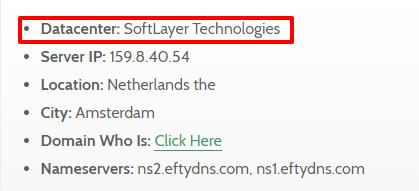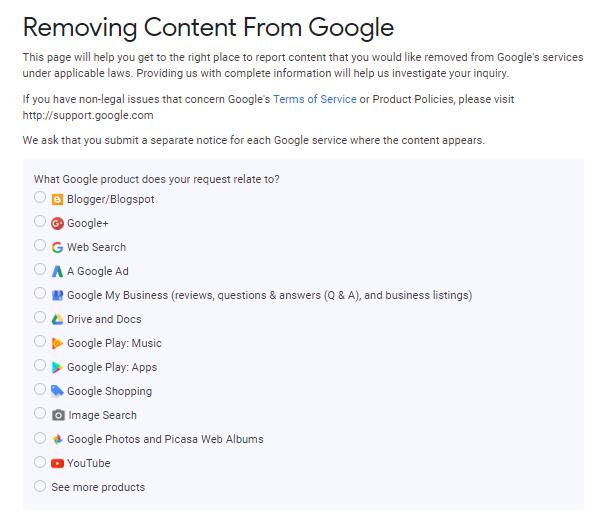What To Do If Someone Has Copied Your Website Content?

When you’ve invested anywhere between a few days to several months or even years on creating quality web content, the last thing you want is for someone to steal it and for search engines to reward them instead of you.
Business owners and entrepreneurs strive to make websites and its content stand out to their consumers. As many of you know creating engaging content that attracts qualified traffic is increasingly challenging.
From stealing web copy to images and even copying website designs, it’s hard to protect your creative work when it is accessible to everyone on the internet.
What to do if your website is copied?
Before you start doing anything, you have to take screenshots.
It is completely natural to immediately contact the parties who copied your content. But hold on a moment. First, take screenshots of the duplicates and if possible, you can use the Wayback Machine tool to view the crawled pages. Likewise, you have to take screenshots of your own work for proof when you go through the next steps.
How to remove copied content?
Before consulting the legal team, here are a few tips which explain what to do when someone copies content from your website.
1. Contact the website owner
Reach out to the owner of the website and request them to take down the page/pages. If it is just a single page or a few design elements, they might work with you to fix it.
If they don’t respond to your request, you have to get information via WHOIS search. When a person registers for a domain, they will be asked to give their contact information. You can find out the information by doing a Whois search.
Once you do the search, you will get a long list of information along with the email ID of the domain owner. If you contact the owner through that email ID, sometimes it’ll reach the right person, but in some cases, it can lead to a dead end. For example, if you do a Whois search for Wisevu.com, you will get this result.
Only the registrar will be revealed. You won’t be able to find any contact information because we use Privacy Guardian to hide them from public view.
In such situations, you can see if there are any contact details about the owner on their website or check if they have a social media presence.
If the website owner is still not responding or if their contact details are protected, try implementing the steps we’ve discussed below.
2. Contact the server host
If you have enough evidence of the copied material, you can contact the server host of that website and send in a request to take down the page. If the evidence you submit is convincing, the web host will most likely remove the blog or page completely.
To do this, you have to identify which server host they are using. You can get the registrar and network information by using a website called Hosting Checker.
Some popular hosts will also provide abuse email and telephone number. You can call or send an email specifying what was copied and the hosting company will guide you further.
If you do a search on Hosting Checker for Wisevu, you will get the below result.
3. Google Digital Millennium Copyright Act (DMCA) takedown
According to Google, Duplicate content generally refers to substantive blocks of content within or across domains that either completely match other content or are appreciably similar. Mostly, this is not deceptive in origin. Examples of non-malicious duplicate content could include:
- Discussion forums that can generate both regular and stripped-down pages targeted at mobile devices
- Store items shown or linked via multiple distinct URLs
- Printer-only versions of web pages
Google takes low-quality content and plagiarized content very seriously. Way back in 2011, Google introduced an update called Panda which was meant to stop websites with thin content, duplicate content, low-quality content, and content which lacks authority/trustworthiness. In the SEO industry, Panda has been cited as an update which is difficult to recover from. To know more about the Panda update and how to recover from it, click here to read more. Plus, take a look at Google’s content policy to learn about their guidelines.
If you’re struggling to find a solution, you can submit a Google DMCA request to remove the copied content. Here are some of the direct links to the respective contact forms.
- If a Blogspot user has copied your content, Fill this form. If you submit reliable evidence, content will be removed directly because Google owns the platform. Click here to learn more about the content policy of Blogspot
- To remove the copyright infringing web pages from Google search results, Fill this form
- To remove infringing content hosted by WordPress.com Fill this form. Click here to learn more about the DMCA process of WordPress
- To submit a notice to LinkedIn Corporation’s Copyright Agent Fill this form
Once you submit the appropriate form, you can monitor your request. If the evidence you submit is valid, Google will remove the copied content. In case the copied content has been indexed, Google will not be able to take any action.
In case if Google manually finds out if only a certain part of a page/website is copied and the rest is original content, based on our general understanding, it might drop the search ranking of that page/website.
By submitting the above content removal request, the page(s) may be removed only from Google Search. If you need the content or page to be taken down from other search engines, you can also submit a request to other search engines like Bing DMCA, Yahoo’s Copyright and IP Policy, and AOL Reporting Claims of Copyright Infringement.
If you want the whole website to be taken down, you can issue a DMCA Takedown through DMCA.com. They are a private company who can remove images, text, video, audio, products etc. irrespective of the location of the infringing website. Even if the copied content is just one paragraph, they can remove it. However, we are unaware of how they will remove the content. So you have to contact DMCA to find out the content removal process for your case.
For full service take down, DMCA charges $199 per website and for Webmasters DIY takedown, they charge $10/month or $100/year. All you have to do is fill this takedown form, select your service type and submit the form to DMCA.
4. Get legal involvement
This should be an absolute last resort because of the time, stress, and resource involvement. If a large-scale website and its SEO value are on the line, legal action may be worthwhile. If it is just a few pages, you can take the Google DMCA approach.
Be proactive. Stay ahead of copycats.
If content duplication is a continuous issue for you, there are a variety of tools which can help you.
- Google Alerts – If you have high ranking blogs on your website, you can paste the title of the blog in the search query to see if anyone is duplicating your content
- Copyscape – This website helps you identify duplicate content for the URL you enter in their search box. If you want to check multiple pages, you have to subscribe to their premium service which can check up to 10k pages for 3c per search (up to 200 words) plus 1c per extra 100 words. You can also send the Copyscape results to server hosts, website owner or Google DMCA. Some of the alternatives of Copyscape are PlagTracker, Dupli Checker, Plagiarisma, CopyGator and Plagiarism Checker – Small SEO Tools.
- Disable right click – You can disable right-click to make it more difficult for people to copy your text or images.
- Mandatory login for development websites – Sometimes in dev websites, developers may add content to check for spacing and alignment issues or they may be working on a major website update in a dev environment www.website.com/dev/. If your dev website is not password protected, someone can steal your content by checking easy to guess dev website location like /dev, /dev2018, /temp, /temp18, /new, etc… So every dev website must have a login to prevent being copied before going live.
- Copyright – When you create a blog and if it’s your original work, it becomes your property. If someone wants to use it, they have to give proper credit. Unfortunately, people don’t do it. You may find your work entirely or in pieces on other websites. As a precautionary measure, you can copyright the content to maintain all the credit for the work. Follow this step-by-step guide to learn how to copyright a blog. Also, keep in mind that you have to submit an application each time you add new content. If you plan to publish blogs on a regular basis, consult a legal professional to form a strategy.
- Trademark – Copyright protects the words of your blog whereas a trademark protects the name of your blog from being copied. For example, let’s say your blog is popular and someone creates a blog similar to your blog title. But they have changed few words so that they are not identical, but it’s still alike. By trademarking the title of your blog, you can prevent others from using it and to avoid confusion. It will also help users to find the right blog easily. Keep in mind, trademarking the name of a blog is not the same as securing the domain name for your business.
- IFTTT – IFTTT is a robust service that allows you to create ‘if this then that’ actions. It simply means that if a predetermined trigger happens, the service will execute an action of your choice. Here is an example of an IFTTT situation – if you post a blog on your website, it will be automatically posted on your Facebook wall. If you’re using WordPress, you can use a plugin to do this for you. XYZ scripts offer plugins that help you to auto-publish posts on social media. Click here to learn more about the plugins. You can also use plugins like AccessPress Social, AutoPost and Social Auto Poster to auto-publish posts. By auto-publishing content on social media, you can reach more readers in less time. It is also a quick way of informing your followers on social media that you wrote the content.
If someone has copied your content, don’t worry. There are many ways to protect them. Try to implement the solutions in our blog and see how things work. If you are concerned about the possibility of this happening frequently, you can file for copyright protection.
If you have any questions or suggestions on how to remove copied content, feel free to mention about it in the comments section below.



